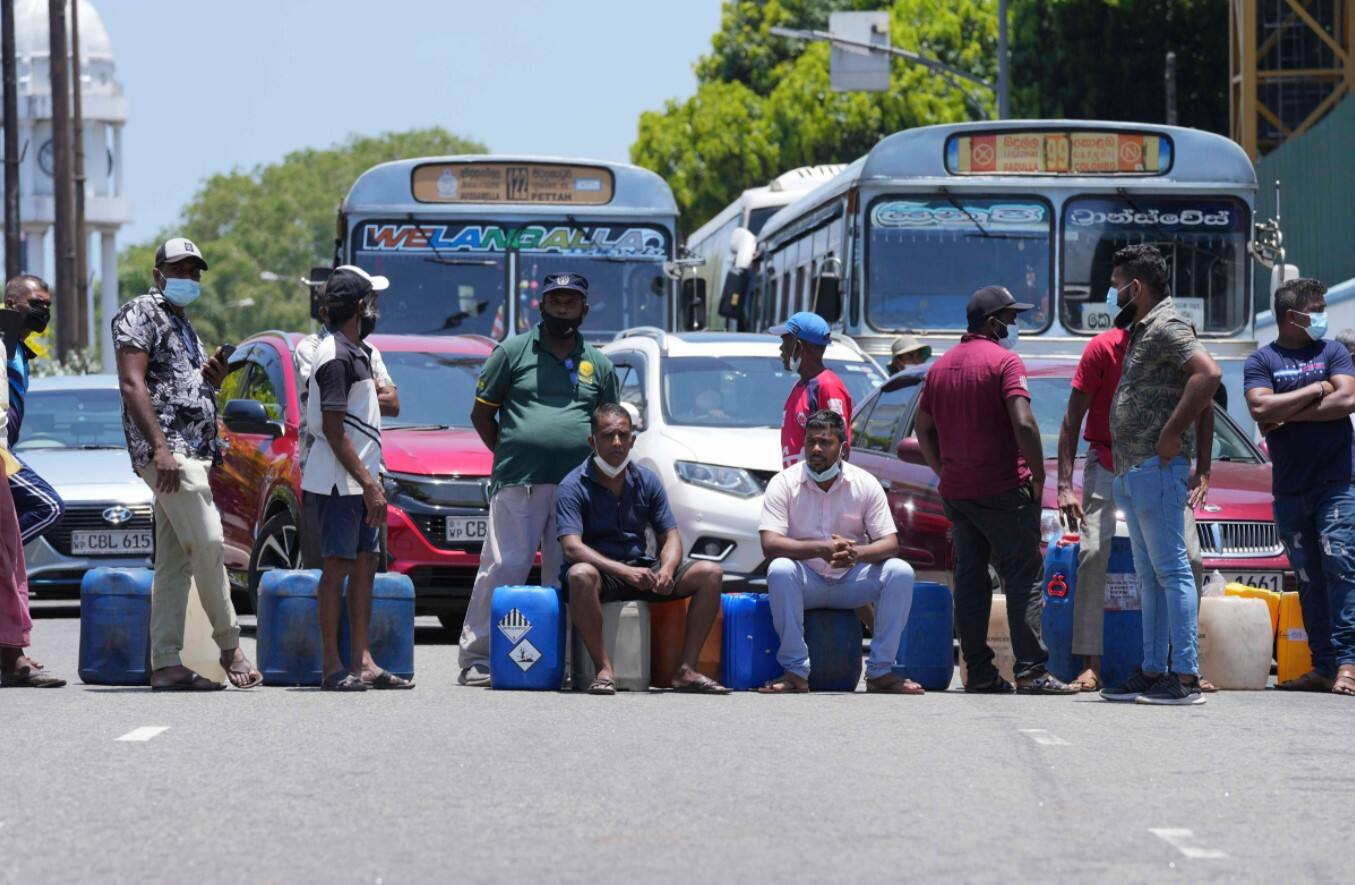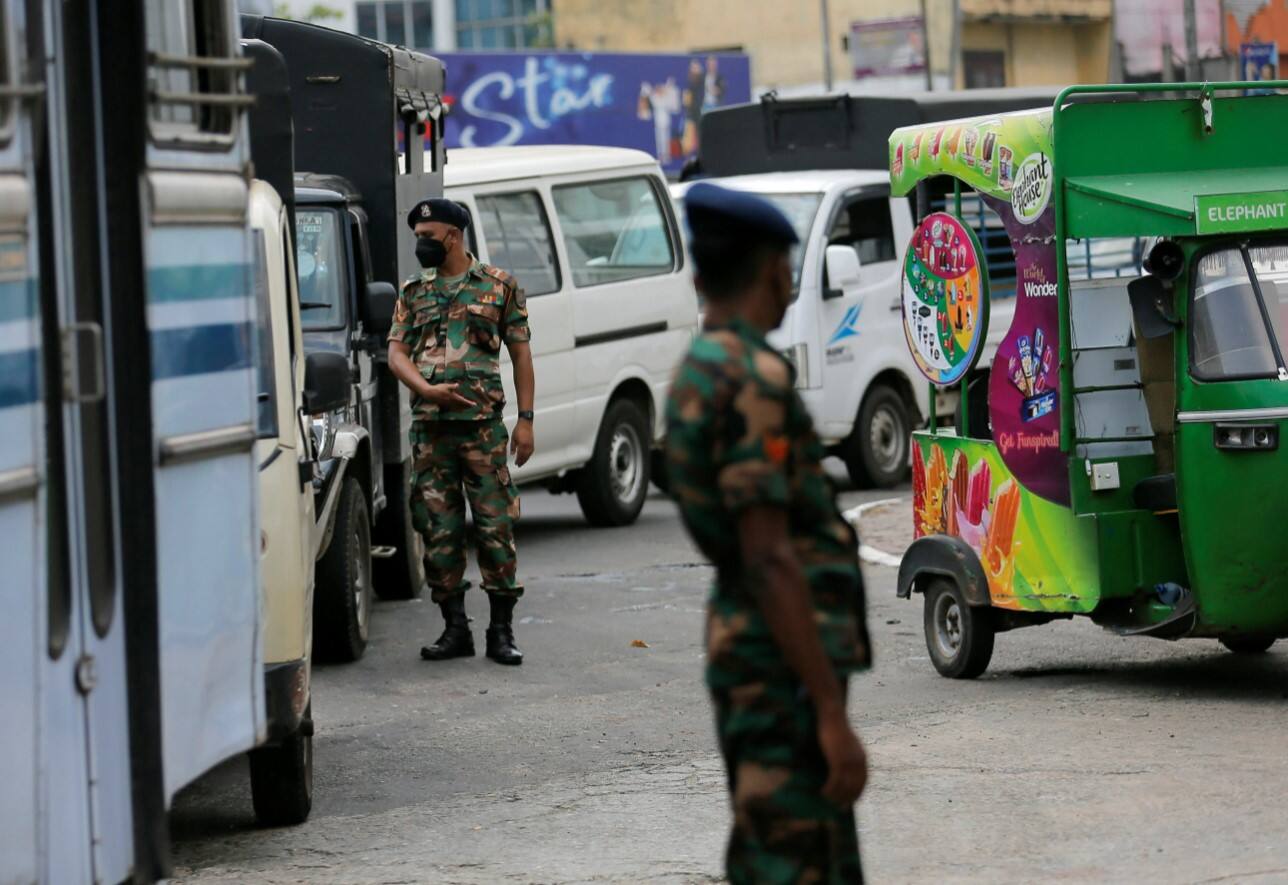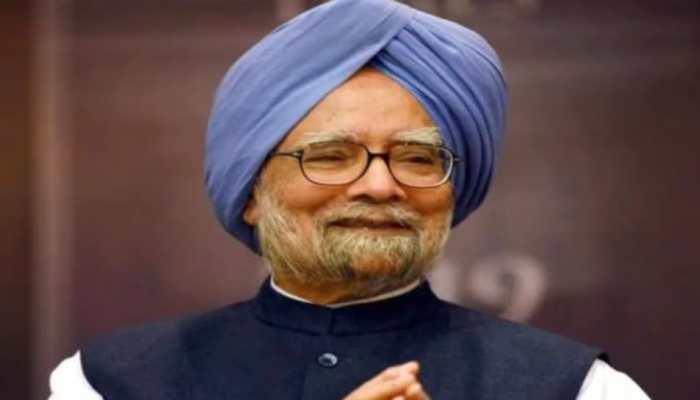Explained: The real cause behind Sri Lanka's ongoing economic crisis
Sri Lankans have had to contend with debilitating power cuts lasting 13 hours, inflation rates crossing 17% and a steeply devalued currency.
- Sri Lanka is facing one of its worst ever economic crises since its independence in 1948.
- Rising global oil prices have worsened Sri Lanka's economic problems.
- Sri Lanka has a modest USD 84 billion economy.
Trending Photos
) Reuters Photo
Reuters Photo Sri Lanka is currently in the midst of an economic crisis where the Sri Lankan government is running low on foreign currency and as a result has been unable to pay for essential imports such as fuel, food items and other essential goods. Sri Lankans have had to contend with debilitating power cuts lasting 13 hours, inflation rates crossing 17% and a steeply devalued currency.
On the surface the cause for Sri Lanka’s current economic crisis can be attributed to economic mismanagement by successive governments and a string of ill-advised decisions such as banning the use of chemical fertilizers and deep tax cuts promised by President Rajapaksha during his 2019 election campaign months before the COVID-19 pandemic decimated Sri Lanka’s major tourism sector and also stopped foreign remittances.
The economic crisis began little over two years ago and during that time Sri Lanka has exhausted over 70% of its foreign reserves and now is only left with $2 billion in foreign reserves. In addition, Sri Lanka also has a whopping $7 billion in debt due in 2022. And that is where the main problem lies, Sri Lankas ever growing debt and its over reliance on China for money for investments into infrastructure projects for the island nation.

(Sri Lankans block traffic as they protest demanding diesel near a gas station in Colombo. Photo: PTI)
In the early 2000’s, Sri Lanka adopted an infrastructure centric growth model based on China’s own growth model hoping that it would be able to create jobs and usher prosperity for the island nation. And Sri Lanka turned towards China for money to fund its infrastructure projects. As per reports, China has invested $12 billion on Sri Lanka’s infrastructure projects from 2006 till 2019 and continues to fund infrastructure projects like the Colombo Port City that is being built by a Chinese state owned enterprise called China Communications Construction Company at the cost of $1.4 billion. The project is expected to complete in 2043, meaning Sri Lanka is unlikely to get any revenue from the project for close to two decades. Even after completion, 43% of the reclaimed land will be leased to China for 99 years because Sri Lanka has no other way to finance it.
Essentially, Sri Lanka has been caught in a vicious cycle of lending money from China for infrastructure projects and being unable to pay them back, resulting in Sri Lanka having to either give up control of the projects or take out other loans in order to pay China back. The most infamous case being that of the port of Hambantota. In the early 2010’s Sri Lanka’s former President Mahinda Rajapaska wanted to build a port in his home region of Hambantota, but requests for funds were rejected numerous times by multiple entities due to the port not having commercial viability.
Finally the Chinese were the only party interested, perhaps due to the strategic location of the port. For the construction of the port Rajapaska sought over $1 billion in loans. However, he lost in the following elections in 2015 and the new government in an effort to avoid paying back such a huge debt decided on a debt-for-equity swap wherein the port and its surrounding 15,000 acres was leased to China for 99 years.
Following this revelation, the International community began to wonder whether this was China’s plan all along, to fund a doomed infrastructure project using loans, employing a Chinese company and taking over strategic Sri Lankan infrastructure when the country could not pay back its loans. Sri Lanka’s crippling foreign debt has led it to asking the IMF for bailouts 16 times in the last 50 years, second only to debt-ridden Pakistan that also borrows heavily from China.
During this economic crisis Sri Lanka has even appealed to China for debt restructuring or extention of a credit line so as to ease its burden somewhat but China has not agreed to Sri Lanka’s request. Experts believe there are two main reasons why China has not agreed to Sri Lanka’s requests, firstly because it sets a bad precedent for other nations that have borrowed money from China and because it will associate China with failure because Sri Lanka’s economic model was based on China’s.
China’s investments into Sri Lanka date all the way back to the 1970s. During then China used to provide Sri Lanka with outright grants and in the 2000s that relationship has ‘upgraded’ to a commercial model that utilized interest-bearing loans and infrastructure related foreign direct investment. During the administration of President Mahinda Rajapaksa China invested into key infrastructure projects in Sri Lanka such as transport, energy and telecommunications project.
China was also deeply involved in the construction and finance of several key critical infrastructure projects like the coal-fired Narocholai power plant 2006, the Hambantota port in 2007, the Mattala International Airport in 2010, the Colombo International Container Terminal at the Colombo Port in 2011 and the Lotus Tower in 2011.
Chinese investment in Sri Lanka sky rocketed after the Belt and Road Initiative was announced in 2013. While high profile projects like the Hambantota project are readily available on the internet, there is no reliable estimate of the cumulative Chinese infrastructure investment in Sri Lanka, the definition of what constitutes a BRI project remains vague.
Between 2012 and 2018, Sri Lanka’s external debt to China doubled from $2.2 billion to $5 billion. Chinese investment into infrastructure projects in Sri Lanka has also resulted in an increase in the import of construction material and Sri Lanka has heavily relied for these goods from China. For example, the construction of the Southern Expressway was due to significant imports of Chinese road construction equipment and construction materials. The rise in the import of construction material and equipment coupled with a small base of Sri Lankan exports to China resulted in a very large trade deficit between the two countries.
Sri Lanka is not the only nation that has to deal with the bleak consequences of Chinese infrastructure investment into low-return projects resulting in a cycle of debt. One in five infrastructure projects in Africa are funded by China and one in three are built by Chinese companies.
More often than not, these projects are undertaken without appropriate studies on their socio-economic impact, or even their commercial viability. One example of this is Angola that is currently being crushed under multi-billion dollar Chinese debt and replaying it with crude oil. Another glaring example of this is Kenya’s ‘railway to nowhere’. The Kenyan government realized that this rail project from Mombasa to Nairobi would put it into enormous debt and thus decided to freeze the project.
Sri Lanka is currently in the worst economic crisis since the country’s founding. High inflation rates have made it harder for Sri Lankans to buy daily necessities, the country has been experiencing 13 hour-long power cuts and people have to stand in line for hours for fuel. With the country’s foreign reserves dwindling there are fears that the country will not be able to repay its foreign debt.

(Sri Lankan troops oversee fuel distribution in Colombo. Photo: Reuters)
A lot of its current problems can be attributed to short term blunders by the Sri Lankan government but a deep study of the country’s economic history will reveal China’s heavy investment and its influence in pushing Sri Lanka to take on more debt in order to build non-economically viable infrastructure projects has led it here. Between 2012-2016 China accounted for 30% of all Foreign Direct Investment into Sri Lanka. Chinese loans and equity are funding an estimated 50 major and minor projects in Sri Lanka worth $11 billion. Not only large scale projects like Hambantota port and Colombo Port City but also roads and water treatment plants.
Chinese loans also come at a much higher interest rate (6.5% per annum) than those from the Asian Development Bank (2.5%-3% per annum). In 2017, the Sri Lankan government spent 83% of its revenue on debt repayment. Looking at these bleak statistics, it is no wonder that the Sri Lankan government choose to convert its debt into equity and hand over Hambantota port to China. Sri Lanka’s crushing external debt is one of the main causes for its current economic crisis and has forced the country to repeatedly devalue its currency just to be able to buy food for its people.
(Disclaimer: Views expressed are personal)
Stay informed on all the latest news, real-time breaking news updates, and follow all the important headlines in india news and world News on Zee News.
Live Tv







)
)
)
)
)
)
)
)
)
)
